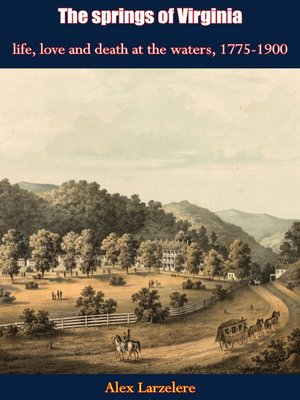
Sign up to save your library
With an OverDrive account, you can save your favorite libraries for at-a-glance information about availability. Find out more about OverDrive accounts.
Find this title in Libby, the library reading app by OverDrive.



Search for a digital library with this title
Title found at these libraries:
| Library Name | Distance |
|---|---|
| Loading... |
Virginia's health resorts from the Revolution to the 20th century. This book presents the Virginia mineral springs. The chief area straddled the continental divide and lay northeast to southwest, with Warm Springs at the top, Gray Sulphur at the bottom, Rockbridge Alum on the east, and Blue Sulphur on the west. The distance between farthest points, either way, was about seventy-five miles. "Almost everyone went in at the Warm Springs and came out the same way" (p. 26). Invalids followed the tour down the center to the White Sulphur for its purging qualities, on to the Sweet for its rehabilitating "tonic," then to the Salt for its Glauber salt or its iodine, and finally to the Red Sulphur. They then doubled back through the Salt and the Sweet, ending with bathing at the Hot and the Warm (p. 30). But while they sampled the water they also sampled the company, for these were "the fountains most strongly impregnated with minerals, heat, fashion, and fame." The author presents gaily the various gentlemen innkeepers and how they succeeded or failed; Southern magnates, particularly the South Carolina Singletons and Petigrus and their kin who occupy a substantial portion of the book; Henry Clay, Van Buren, John Tyler; philanthropists like Peabody and Corcoran; and less notable persons from the South, the North, and abroad. Usually Virginians are conspicuous by their absence, except General Lee, and Virginia belles in the more trivial postwar section based on reporters' letters to newspapers.—Journal of American History







